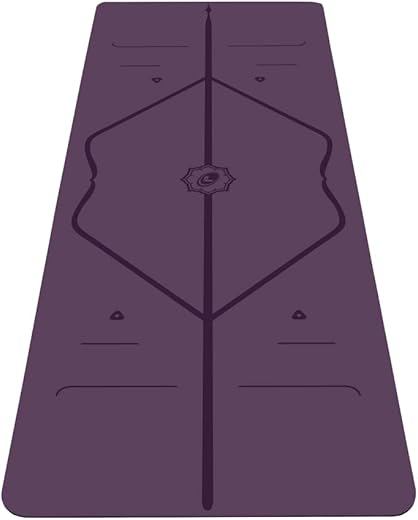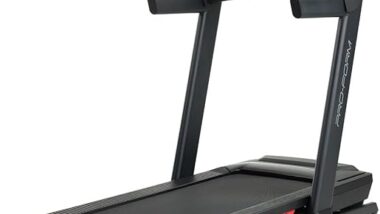This step-by-step guide outlines essential care instructions for maintaining your Liforme Yoga Mat after each use. It emphasizes the importance of cleaning, drying, and storing your mat to preserve its quality and performance. By following these straightforward steps, you can effectively remove sweat and dirt, prevent odors, and ensure that your mat remains in excellent condition for your yoga practice, ultimately enhancing your overall experience.
Cleaning Guide for LiforMe Yoga Mats and Other PU Natural Rubber Mats
Remove Debris
Shake off any loose debris from your Liforme Yoga Mat after your session. Stand the mat on its side and gently tap it against a flat surface to dislodge hair, dust, or dirt. Use your hands to flick away any stubborn particles that remain on the surface. Ensure that the mat is clean and ready for your next practice.
Prepare a Cleaning Solution
Mix a gentle cleaning solution by combining warm water with a few drops of mild soap or a specialized yoga mat cleaner. Stir the mixture gently to ensure the soap is evenly distributed. Avoid harsh chemicals, as they can damage the material of your mat and compromise its texture. Test the solution on a small, inconspicuous area of the mat before applying it widely.
Wipe Down the Mat
Dampen a soft cloth or sponge with the cleaning solution. Wipe down the entire surface of the mat, ensuring you cover every inch. Focus on spots that appear particularly dirty or sweaty, such as areas where your hands or feet frequently make contact during workouts. For example, if your mat has a stain from a previous session or looks grimy around the edges, apply a bit more pressure while wiping those areas to lift the dirt effectively.
Rinse with Water
Dampen a clean cloth with plain water. Wipe the mat thoroughly, focusing on areas where you applied soap. Make sure to rinse the cloth frequently in clean water to avoid spreading any soap residue. Check the mat closely to ensure all cleaning solution is removed, especially in corners and crevices, as leftover soap can make the surface slippery and attract dirt.
Dry the Mat
Lay the mat flat on a clean, dry surface or hang it up to air dry. Ensure the area is free of dust and debris to avoid transferring dirt back onto the mat. Avoid direct sunlight, as it can cause colors to fade and the material to crack. Rotate the mat occasionally if it’s laid flat to promote even drying and prevent moisture from accumulating.
Store Properly
Ensure the mat is completely dry before proceeding. Roll it up tightly or lay it flat in a cool, dry place. Avoid storing it near direct heat sources such as radiators or heaters to prevent damage. Maintain its shape and material integrity by checking the storage space for humidity and temperature fluctuations.
Avoid Excessive Moisture
Allow your mat to dry completely before rolling it up if it becomes excessively wet during use. Lay the mat flat in a well-ventilated area, preferably in sunlight, as this helps speed up the drying process. Shake off any excess water gently, and if possible, use a towel to blot the surface. Avoid folding or rolling the mat while it is still damp, as this can create a breeding ground for mold and lead to unpleasant odors.
Regular Maintenance
- Choose a gentle, non-toxic cleaner suitable for your mat’s material.
- Mix the cleaner with warm water in a spray bottle.
- Spray the solution evenly across the mat’s surface.
- Use a soft cloth or sponge to scrub any stubborn spots.
- Rinse the mat thoroughly with clean water to remove any residue.
- Hang the mat to air dry completely before storing it.
- Repeat this deep cleaning process every few weeks to ensure optimal grip and hygiene.
Check for Damage
Inspect your mat regularly for signs of wear, including tears, cracks, or discoloration. Look closely at the edges and surface, as these areas are most susceptible to damage. If you notice any issues, address them immediately by repairing or replacing your mat. Keep your mat clean and store it properly to prevent further wear and extend its lifespan.
Essential Maintenance Tips
In conclusion, taking the time to properly care for my Liforme Yoga Mat after each use is essential for preserving its quality and longevity. By implementing these simple maintenance steps, I can ensure a safe and enjoyable yoga practice for years to come. My commitment to routine cleaning and mindful storage will not only enhance my experience but also protect my investment in this wonderful mat.
Essential Supplies Needed
Essential Maintenance Guide
Maximize Your Practice: Step-by-Step Guide to Using Your Liforme Yoga Mat
- Choose the Right Surface: Ensure you use the Liforme Yoga Mat on a flat, non-slippery surface to prevent any accidents and provide stability during your practice
- Familiarize Yourself with Alignment Guide: Take a moment to notice the alignment markings on the mat. These can help you position your body correctly in various poses, making it easier to maintain proper form
- Start with Basic Poses: Begin your practice with foundational poses like Downward Dog, Child’s Pose, and Warrior I. The mat’s grip and cushioning will support you, allowing you to focus on your alignment and breath
- Stay Hydrated: Keep a water bottle nearby, as practicing yoga can be physically demanding. Staying hydrated helps maintain your energy and concentration throughout your session
- Clean and Maintain Your Mat: After each practice, wipe down your Liforme Yoga Mat with a gentle cleanser to maintain its quality and longevity. This ensures a clean surface for your next session
Your Questions About the Liforme Yoga Mat Answered
The Liforme Yoga Mat is primarily made from natural rubber and features a non-toxic, eco-friendly PVC material on its surface. The mat is designed to provide good grip and cushioning, making it suitable for various types of yoga practices. Additionally, the mat is free from harmful chemicals, ensuring a safer option for users.
The eco-friendliness of the Liforme Yoga Mat significantly contributes to its popularity among yoga practitioners. Many individuals in the yoga community prioritize sustainability and seek products that align with their values of environmental consciousness. The Liforme Yoga Mat is made from natural rubber, which is biodegradable and free from toxic chemicals, making it an appealing choice for those concerned about their ecological footprint. Additionally, its durable design reduces the need for frequent replacements, further minimizing waste. These attributes not only enhance its appeal but also foster a sense of responsibility among users, making it a popular option for eco-conscious practitioners.
The Liforme Yoga Mat is known for its superior grip compared to traditional yoga mats. It features a natural rubber surface that provides excellent traction, even in sweaty conditions, which helps prevent slipping during poses. Traditional mats, often made from PVC or foam, may not offer the same level of grip, especially when wet. Additionally, the Liforme mat has alignment markers that can help improve your practice, while many standard mats lack these features. Overall, I find that the Liforme mat’s grip enhances stability and safety during my yoga sessions.
Yes, the Liforme Yoga Mat can be used for different types of yoga, including hot yoga and vinyasa. Its natural rubber surface provides excellent grip, which is especially beneficial in hot yoga where sweat can make mats slippery. Additionally, the mat is designed with alignment guides that can help during vinyasa flows, ensuring I maintain proper form throughout my practice. Overall, its durability and non-toxic materials make it suitable for various yoga styles.
The Liforme Yoga Mat weighs approximately 2.5 kg (around 5.5 lbs), which can impact its portability for travel or outdoor use. While this weight is manageable for many yogis, it may be heavier compared to some travel mats that are designed to be ultra-light and more compact. If I plan to carry it in a backpack or a travel bag, I might notice the added weight, especially if I’m also packing other gear. However, the durability and grip of the Liforme mat can make it worth the extra weight for my practice. Overall, if I prioritize weight and packing size, I might consider a lighter mat, but for quality and performance, the Liforme mat has its advantages.







Thanks for the question! I recommend using white vinegar for the cleaning solution as it’s mild and won’t leave any residue. Apple cider vinegar can be a bit stronger and might not be as mat-friendly.
I actually let my mat air dry on a towel instead of hanging it! Seems to work well for me and I feel like it prevents any stretching. Anyone else doing this?
That’s an interesting method! Air drying on a towel can definitely help absorb excess moisture without stretching. It’s great to hear different approaches!
I’ve always just used water and a little dish soap for my Liforme mat. Wondering if others have tried that and how it compares to the vinegar solution? Anyone had bad experiences with soap?
That’s a great point! Dish soap can work well too, but make sure it’s very diluted. Some users have reported that certain soaps can leave a residue, so it’s a bit of a trial and error!
What do you all think about using essential oils in the cleaning solution? I find it makes my mat smell amazing but not sure if it’s safe for the material.
Using essential oils can add a lovely scent, but be cautious! Some oils can break down the mat’s material over time. If you try it, stick to just a drop or two mixed in with your solution!
I’d love to see a section on how to deal with odors in yoga mats! Mine seems to have a bit of a smell after a workout, even after cleaning. Any tips?
Thanks for the suggestion! We’ll definitely consider adding a section on odor management in future articles. For now, try sprinkling some baking soda on the mat and letting it sit for a few hours before vacuuming it off.
Hey, great guide! Quick question about step 2: what kind of vinegar do you recommend for the cleaning solution? I’ve heard different types can affect the mat differently. Thanks!
I followed these steps and my Liforme mat looks brand new! I was worried about the cleaning solution but it did wonders. So happy I found this guide!
That’s fantastic to hear! We’re so glad you found the guide helpful and that your mat is looking great again. Keep practicing and enjoying your yoga!